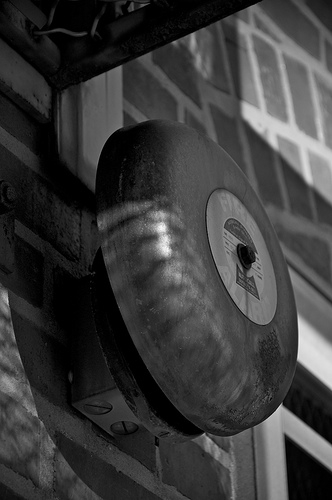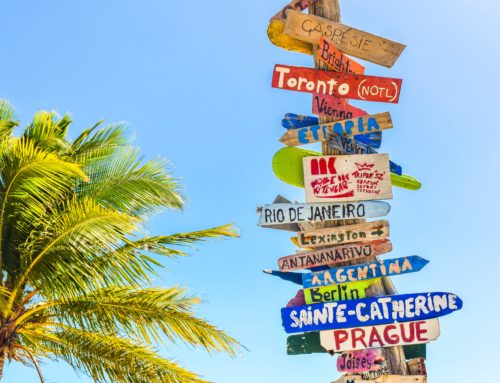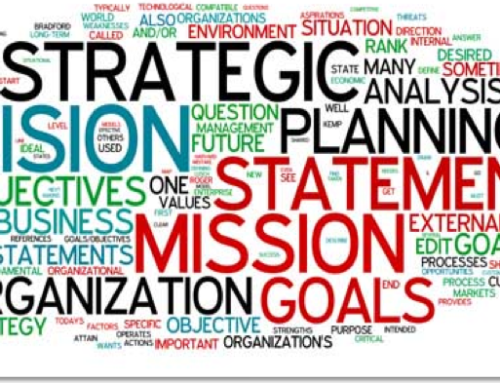Guest Post by Narciso Tovar
I remember the time
I went through my first fire drill.
Image: Stephen Korecky via Flickr, Creative Commons
I was finger painting in kindergarten and having a good ole time.
No doubt I was probably doing what I thought to be a rendition of Hong Kong Phooey or the Lone Ranger (both great heroes in their own right, in my humble opinion).
I was so shocked by the noise and the flurry of activity that I began to wipe the paint on my clothes to hurry myself outside.
And of course, then came the questions from my mom: “What happened to your clothes?”
Fire drills are important; they get kids used to the idea of orderly exits in case of an emergency and ultimately aim to keep them safe.
Orderly exits that don’t necessarily include leap-frogging your way to safety – even though that may be a little fun…
In the business of communications, the need for a “fire drill” can be equated to needing a crisis plan in place.
Although not quite as simple as school’s fire drill, having a crisis plan serves the same purpose: to keep everyone in the company (including its reputation) safe.
Not everyone agrees with this… before it hits the fan, that is.
Tiger Woods took things into his own hands by saying NOTHING when he had his accident almost a year ago.
He avoided the press, refused to make a statement and just stayed out of sight. This kind of attitude BEFORE this incident made him come off as mysterious or unattainable – like a hard-to-get kind of prospect.
Not realizing that his circumstances were quite as big as they were, this same demeanor made him look like he was hiding something, or… guilty.
You can also see this kind of attitude with the current housing crisis.
A lot of builders went into duck-n-cover mode – quite a PASSIVE move if you ask me.
Especially since this kind of climate serves as a great opportunity for homebuilders to identify themselves as homeowners, reconsider their plans and RETHINK their efforts – not pull back.
The smart brands kept their chips in: they stayed in the game with different messages, new incentives and, ultimately made themselves part of the conversation.
I can go into other examples, but… you get the point.
Keeping all this in mind, following are my top tips for whenever you have to develop a crisis management plan.
1. Prepare contingency plans – like we did as kids with the fire drills, we have to
Know what to do
How to do it
When
How to behave.
2. Move swiftly; unlike Tiger and BP, this is no time to hide out or “ride the storm.”
Take charge of the situation by making yourself the focal point
Speak with the press
Use your online presence.
3. Adapt & change; keep yourself loose and flexible.
Things happen, and change, in times like these:
Long hours
Emotions.
4. Give accurate & correct information.
Don’t provide “shades” of the truth
Keep it real
Be a resource.
5. Be yourself – people and the press respond to a human being that is both emotional and rational.
Plus, it immediately humanizes and puts a face to the situation.
What other tips would you recommend? How have your “fire drills” helped your clients?
 With more than 14 years of public relations experience, Narciso Tovar is president and founder of Big Noise Communications, that runs on Method + Moxie. He lives in Dallas with his wife, Rhonda, and has a strong track record in media communications, both “old” and “new,” with organizations such as Vonage and the Wall Street Journal Online. One of the most energetic young voices in social media, you can easily connect with Narciso on Twitter.
With more than 14 years of public relations experience, Narciso Tovar is president and founder of Big Noise Communications, that runs on Method + Moxie. He lives in Dallas with his wife, Rhonda, and has a strong track record in media communications, both “old” and “new,” with organizations such as Vonage and the Wall Street Journal Online. One of the most energetic young voices in social media, you can easily connect with Narciso on Twitter.

![[EVENT]: PR Hacks for Small Biz (online)](https://shonaliburke.com/wp-content/uploads/2021/06/FB-Ad-1200x800-01-01-01-Copy-500x383.jpeg)








[…] Waxing Unlyrical […]
Narciso,
This post was really informative for me as a PR student. The “fire drill” idea seems like it would help many people and companies. The importance of preparation can be overlooked, but it may be one of the most important components of PR. Crisis is a reality that is almost guaranteed to happen. This fact in itself is a good reason for preparation. If this advice is taken, it would save a lot of turmoil for many people.
Again, thanks for the informative post. I will definately put it to good use in the future.
Thanks,
Josh
Thanks for your feedback, Josh – sorry it’s taken me so long to respond…ironically, we had a little bit of a crisis with a client (ha – go figure)!
But I always view communications as a bit of a high wire act – you put in all of this preparation, hard work, focus, etc. and then it’s time for ‘the show.’ The net for the high wire act is like the crisis plan. No, you don’t want anything to happen and you’re certainly not planning on anything happening to the performer, but having that net is ESSENTIAL. Like the performer, having that ‘net’ in place for any company helps protect the company from killing itself if anything goes awry.
[…] This post was mentioned on Twitter by Valerie Merahn Simon, JGoldsborough. JGoldsborough said: @Narciso17 is talking abt fire drills @Shonali's place. http://bit.ly/bzY3gi Does your org have a crisis plan? Do crisis fire drills? […]
Good advice, Narciso. Fire drills are important. I would even take it so far as to say that many companies create a crisis plan but then don’t go through the necessary fire drills to make sure people know how the plan will look when acted out in real life. It’s like building a website and doing no usability testing.
Still, there are so many companies out there without a crisis plan at all, you are right on that is the first place to start.
Cheers,
Justin
Very Strong Point There, Justin! Especially given the fact that ANY PLAN is always going to look like a great plan until you bring in real-life situations, scenarios, role-playing, etc. It’s like buying a car without test-driving it…or, to your point, building a website without giving it a usability spin.
Here’s another example: you can always tell the seasoned actors on sitcoms that are taped before a live studio audience. These are the people that know when to get back to their scene (it’s AFTER the laughter dies down..you don’t try to rush through it to stay on time..you let the laughter takes its time). Just about everyone in the cast of Everybody Loves Raymond knew this…and they milked out their laughs quite skillfully.
My point is, unless you go through the motions of ‘real life,’ you have no REAL idea on how these things may play out.
~ Narciso Tovar
Big Noise Communications
@Narciso17
[…] This post was mentioned on Twitter by Shonali Burke, Anfisa. Anfisa said: @pr_in_pink Thanks so much for sharing @Narciso17's great post on the value of a fire drill. :) http://bit.ly/biGOGs… http://goo.gl/fb/JtGGl […]
Very well put, Narisco–you raise a lot of good points but I may also add that company leaders or clients should also be prepared for negative feedback, regardless of if they think they did everything right. Sometimes, even the best intentions can fall flat with an audience. It goes back to your comment about emotions and keeping yourself in check.
Excellent point, Krista! Part of doing your ‘communications fire-drill’ work should involve potential (in some cases, inveitable) negative feedback. There will always be some nay-sayers – questioning your moves and intent (even if you have 99% of America backing you up). How you handle the crisis and this negative response will help determine how well you come out of the issue on the other side.